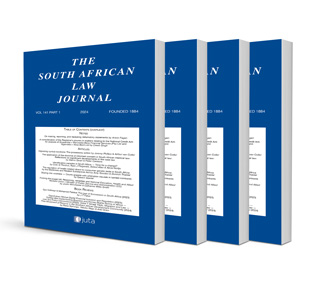
Note
Judicial reliance on documents not established into evidence: Dispensing justice or injudicious overreach?
Author: Ferdinand Heinrich Hermann Kehrhahn
ISSN: 1996-2177
Affiliations: Lecturer, Department of Procedural Law, University of Pretoria
Source: South African Law Journal, Volume 141 Issue 3, p. 483-495
https://doi.org/10.47348/SALJ/v141/i3a4
Abstract
Documents make their way to the court file via numerous avenues. Courts sometimes rely on the contents of such documents, which are not established into evidence, to draw inferences and adjudicate disputes. The main reason for this practice is to buttress fraud committed against parties such as state organs because of their lackadaisical approach to litigation, knowing that the taxpayer foots the bill. Some courts go so far as to suggest that the court should employ an inquisitorial approach in matters involving state organs or even take a partisan approach. Noble as the court’s intentions hopefully may be, several policy decisions point to the undesirability of this practice. This note considers, first, the general rule that a document in the court file is inadmissible hearsay evidence until it is established into evidence; secondly, the reasons why a court would have regard to such non-evidence; thirdly, the policy reasons justifying the general rule; and, fourthly, the recent misplaced suggestion that documents may more readily be admitted into evidence under the common-law exception to the rule against hearsay evidence or under s 34(2) of the Civil Proceedings Evidence Act. Recommendations to remedy this objectionable practice conclude the note.